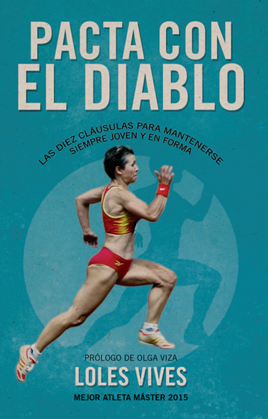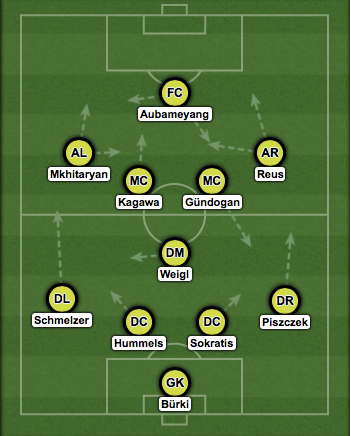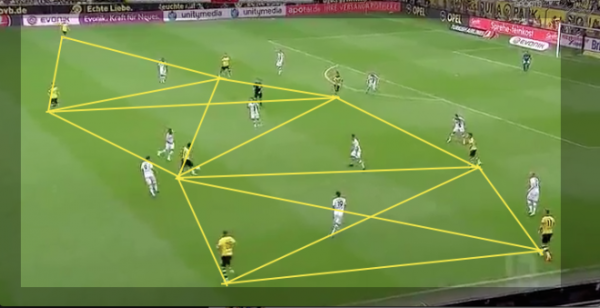Borussia Dortmund. Thomas Tuchel Debut Bundesliga
Both teams played their usual formation. Dortmund in a 4-1-4-1 / 4-4-1-1 hybrid and Gladbach in their 4-4-1-1 / 4-4-2 system. The only question for Dortmund was if Gonzalo Castro or Shinji Kagawa would start, Tuchel opted for the latter. Probably to utilize Kagawa’s quality to get between the lines of an opponent and his technical ability to be effective there. Julian Weigl played as lone holding midfielder with Gündogan and Kagawa in front of him. Gündogan would often drop back to help in the build-up, while Kagawa was looking for space between the lines and helped overloading the wings.
BUILD-UP
Almost every attack ran through Gündogan, who had the most touches of all players on the pitch (111), and Mats Hummels (101). Dortmund’s attacks were often initiated with some patient short passing on the right side, where Gündogan received the ball from Sokratis and advance the play from there. Piszczek wasn’t as advanced as usually in the build-up, so Gündogan always had at least one open man he could pass to. It didn’t seem like Gündogan, Piszczek, and Reus tried to break through on the right side, but rather tried to lure Gladbach onto their side and then quickly shift the ball to the left, where they overloaded the wing as usual. Both the 1-0 and the 2-0 were created that way. Gladbach defended even more passively than usual and in a very narrow block. With those quick shifts of sides Dortmund were able to move Gladbach’s chains and create some holes to play through.
Numerous times Hummels found himself with acres of space to play his incredible laser passes, because the Gladbach players struggled to sprint from one side to the other as fast as the ball did. Gündogan and Weigl both helped Hummels gaining that space with some clever positiong. Both were constantly free to pass the ball to or occupied opposing players and disrupted Gladbach’s shape. Often Stindl or Xhaka had to follow Gündogan and opened up the space behind them, which Dortmund utilized brilliantly. Gladbach simply weren’t able to cope with the pace of Dortmund’s passing and shift of play during a few occasions, as Favre admitted after the game. Dortmund put Gladbach constantly under pressure to answer their questions as quickly as possible. The best example being the 1-0, where Stindl had to decide if he wanted to cover Reus or Kagawa. Stindl decided to cover Reus and therefore freed up Kagawa, who received a pinpoint perfect pass from Hummels and assisted Reus’ goal with a quick lay-off.
The build-up and possession game definitely looks improved compared to last season. Each player seems to have a strict area where he’s supposed to play in, which improved the understanding and passing drastically. Although the positioning might be rather strict, the players are still allowed to use all their creativity to solve problems within those areas. This is what Tuchel meant when he said “discipline and creativity don’t exclude each other”.
PRESSING AND GEGENPRESSING
In his first press conference for Dortmund Tuchel said he wants his team to be “dominant during all phases of the game”, so it was no surprise he put a lot of emphasis on how to defend dominantly. But it might well have been a surprise for Gladbach just how well it worked out. While the pressing didn’t seem as intense as in the Klopp days, it was still very effective.
Defensively Dortmund often switched into a 4-4-2 system, where Kagawa became the second striker next to Aubameyang. Kagawa and Aubameyang were able to keep Xhaka, who often came deep to build up the play, under control, while Gündogan and Weigl took care of Stindl and Raffael respectively. This way they forced Gladbach into wing play, where it was easier to isolate them and win the ball back. This also kept Gladbach away from Dortmund’s goal. The only chances Gladbach were able to create came after some won 50/50 duels, which lead Sokratis to sprint out of the back four and open up holes for Gladbach to use.
Even more impressive than the pressing was the Gegenpressing (the immediate try to recover a ball after losing it). It helps that the players have clear instructions in which spaces they have to play in possession, because it makes it easier to understand where to run when losing possession. When gegenpressing it seemed like Dortmund would play a mix of a space and ball-oriented approach, which lead to multiple interceptions and recovered balls.
CONCLUSSION
Dortmund was dominant in all phases of the game, just like Tuchel wanted them to be. Time will tell if this team can also win against high-pressing and more physical sides, like their next opponent Ingolstadt. It’s too early to get ahead of ourselves, but this one game was definitely exciting.
* Luca Gierl & Felipe Araya.


BUSCADOR DE CATEGORÍAS
BUSCADOR POR MES
ÚLTIMOS TWEETS
Tweets por @martiperarnauSÍGUENOS EN FACEBOOK








